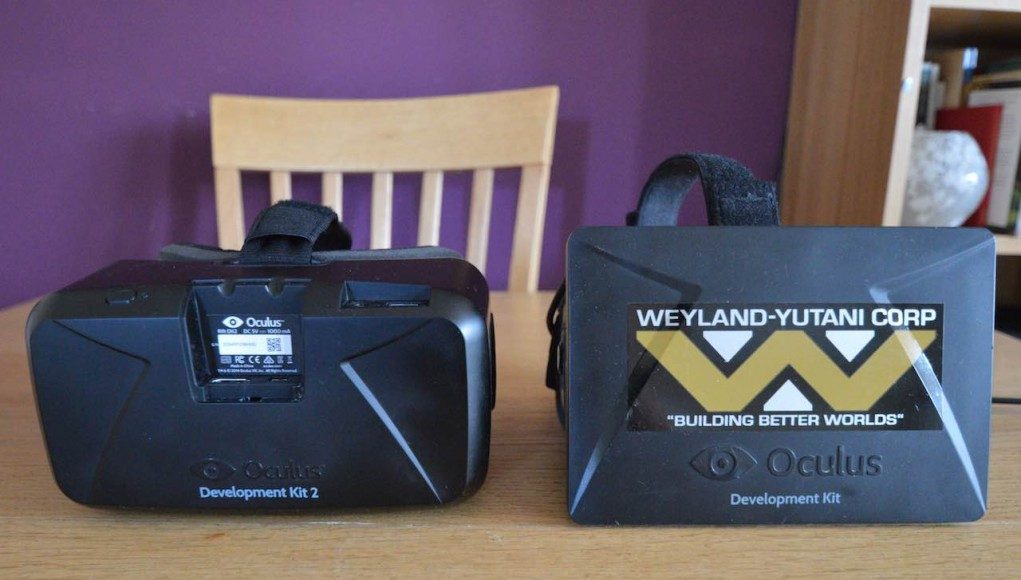
Anyway, enough of the theory – what’s it like in practice?
Inside the Box and Unit Build and Comfort Impressions
The Oculus Rift DK2 takes a different approach to the DK1 in terms of connectivity. Whereas with the DK1, the Headset itself held only the display, lenses and IMU – the DK2 integrates the guts of the DL1 breakout box, into the headset itself. This means that you have a single, integrated cable running from the headset, splitting into USB (for tracking data) and HDMI (for video). It’s a refreshingly uncluttered approach and means there’s less chance of cable tangle.
The headset unit itself feels like a quality component with high quality plastics used throughout with a good level of fit and finish. The camera too, a custom designed and built device as a solid quality feel. Nice touches, such as the braided cable sheath (DK2 to USB / HDMI) and minimalist simplicity of the camera are appreciated.
Physically, the DK2 feels very much like the DK1 to wear, light and comfortable although (despite what looks like extra ventilation) still a little warm over long periods on a summers day.
The retraction assembly is almost identical to DK1, with two rotatable dials each side to bring the display and lens assembly close or further from your face. The lenses themselves are slightly larger (and flatter on the user facing side) and there are now only two sets (A, fitted as standard and B). The device feels slightly more comfortable in place and I found it easier to wear glasses whilst in VR than with the DK1 – although you still need to be careful as you put it on.
The DK2’s enhancements include a higher resolution panel, up from 1280×800 to 1920×1080 (1080p) and moved to a pentile matrix, OLED panel for display duties. This means higher levels of resolvable detail and a much reduced screen door effect. The panel features low persistence of vision, a technology pioneered by Valve that aims to cut motion artefacts by only displaying the latest, most correct display information relative to the user’s movements – as users of the DK1 will attest, its LCD panel was heavily prone to smearing, things are now much improved with the DK2.
No comments:
Post a Comment